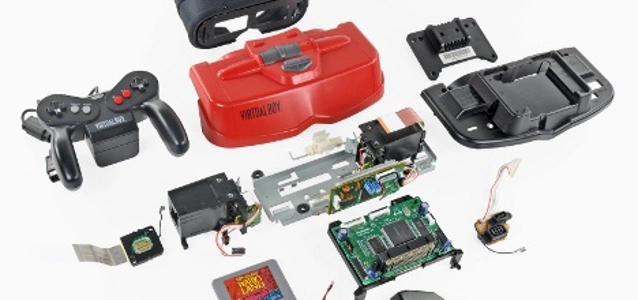
© iFixit
Analysis |
Nintendo Virtual Boy teardown
Time for another retro-teardown from the iFixit guys, and do we have a treat for you this time. The Virtual Boy – the failed portable video game console released in 1995 by Nintendo.
Direct quote from the guys who created the teardown: "The Virtual Boy is bar none the coolest device we've ever taken apart." Everyone at the office agrees that it's an awesome console, so much so that there have been arguments over who's going to play it next.
Nintendo called the Virtual Boy a "32-bit, 3-D experience" that "eliminates all external stimuli, totally immersing players into their own private universe." Even so, TIME Magazine listed the Virtual Boy as one of the worst inventions of all time, and PC World called it one of "the ugliest products in tech history." Of course, neither Time nor PC World ever opened one, so what do they know?
The Virtual Boy was only available for eight months -- from August 14, 1995 until March 2, 1996 -- with only 770,000 units sold. Compare that with the Nintendo 64, which sold 32.93 million units over its lifespan.
Tech Specs:
- 20 MHz, 32-bit RISC Processor
- 128 KB dual-port VRAM
- 384 x 224 pixel resolution
- 2-bit monochrome display (black and three shades of red)
- 16-bit stereo sound
- Nintendo '95 VUE-VPU, 9520KK023
- Nintendo NVC-VUE, (C) NEC '91 '93 9520KX003
- Nintendo VRM-VUE, 9508KU028
- Toshiba TC511664BJ-80 128 KB of DRAM
- Toshiba TC511632FL-70
- Nintendo '95 VSU-VUE ATT, 9507A3014
- Texas Instruments 57A5CXK, HCU04



